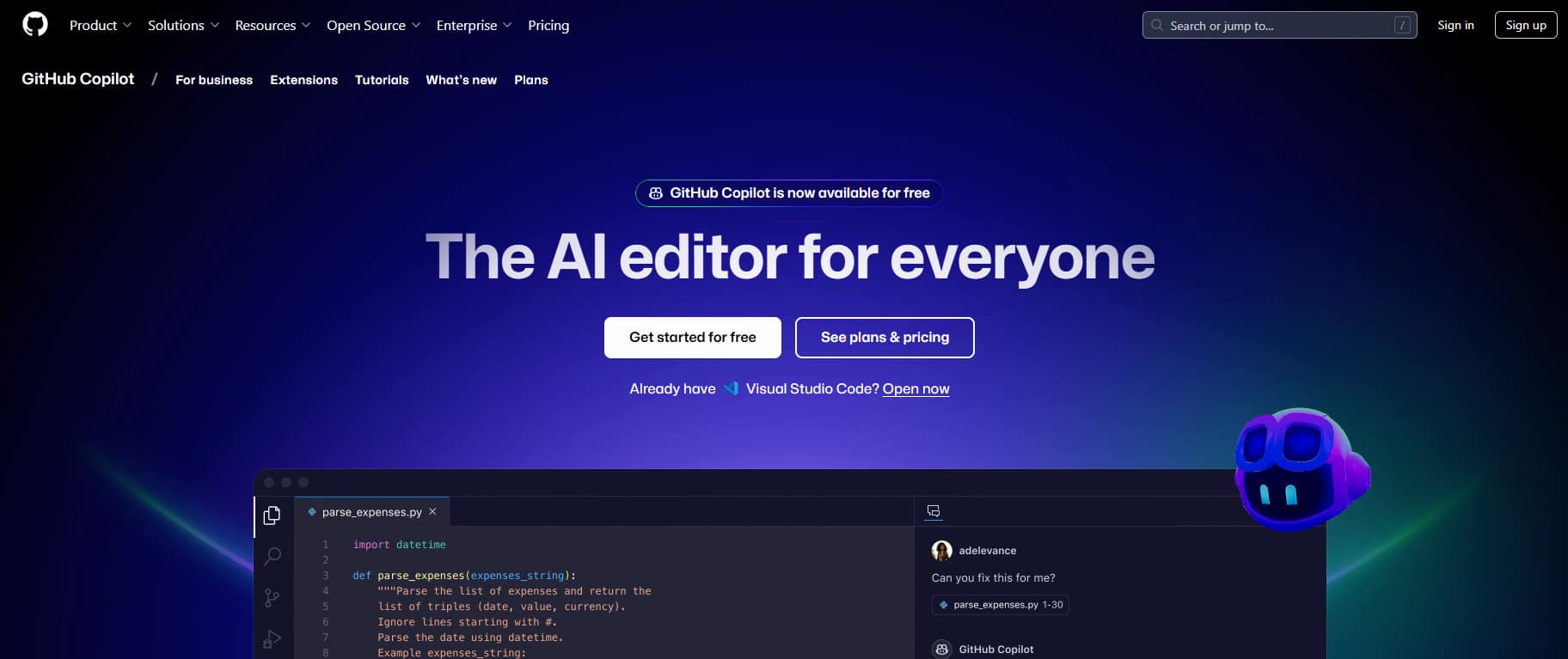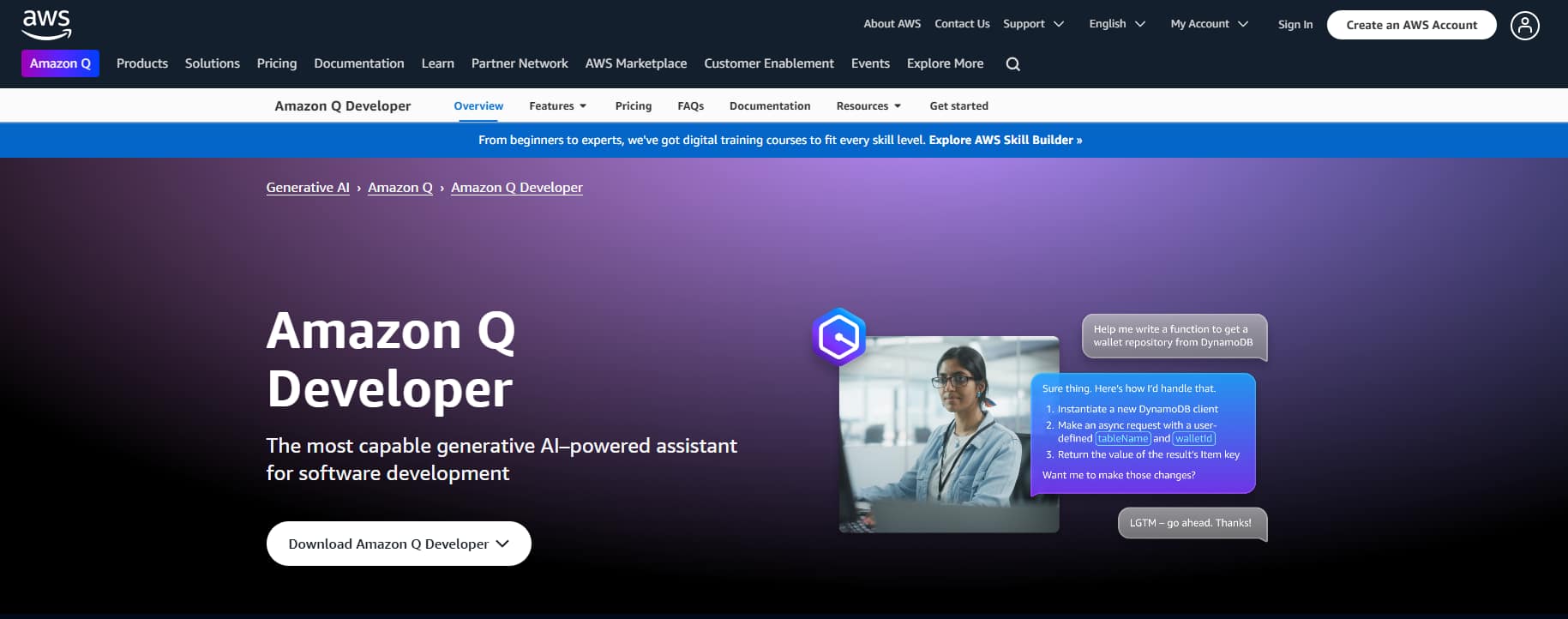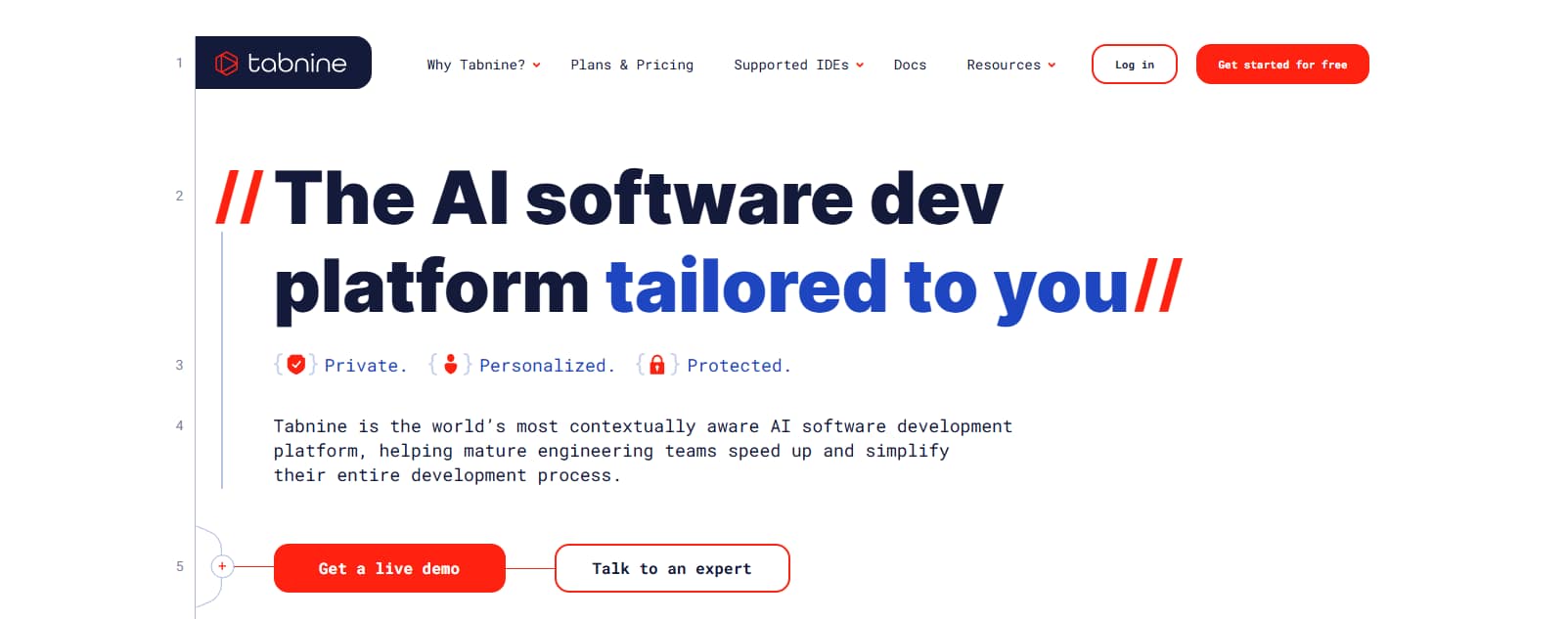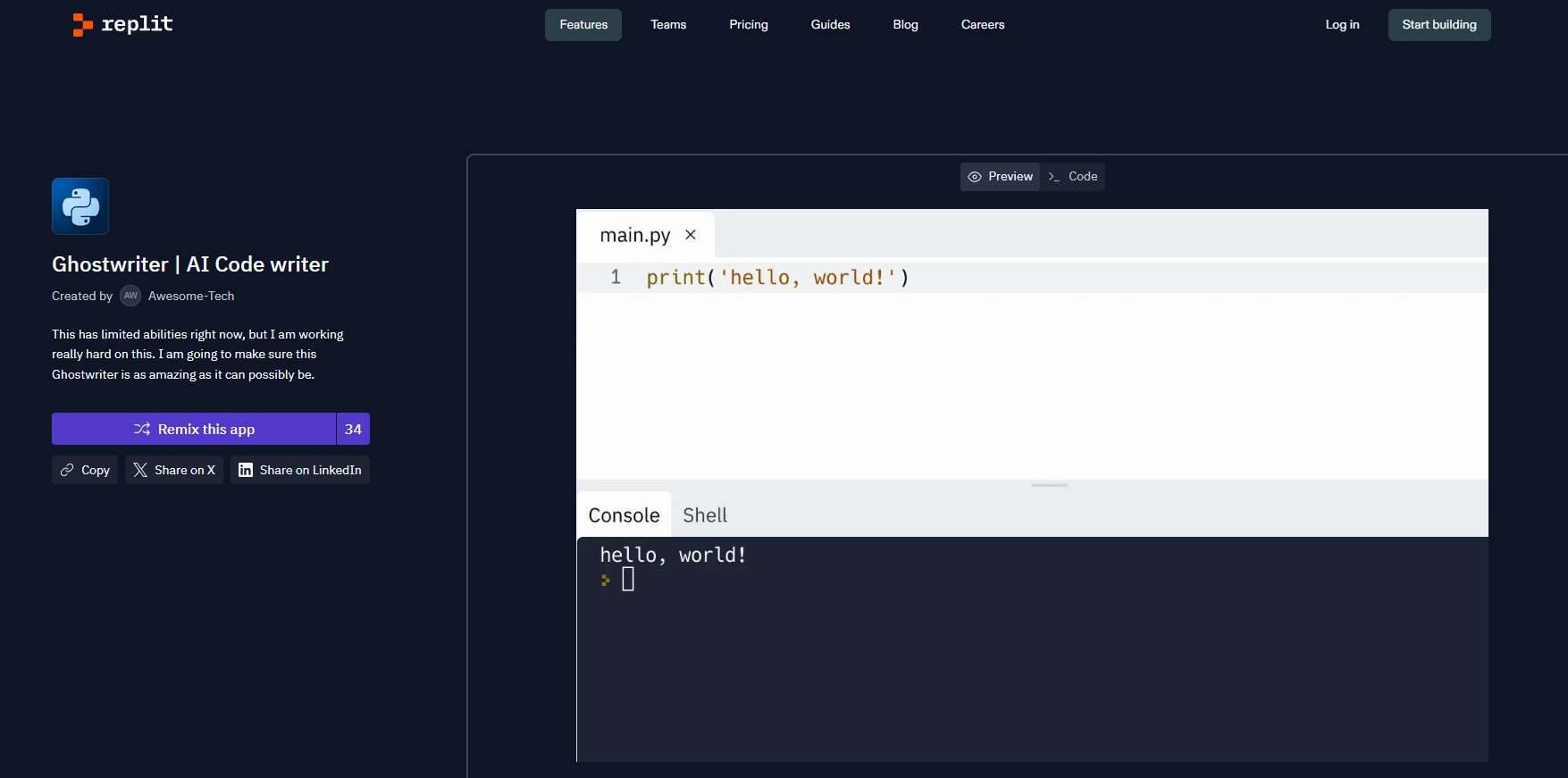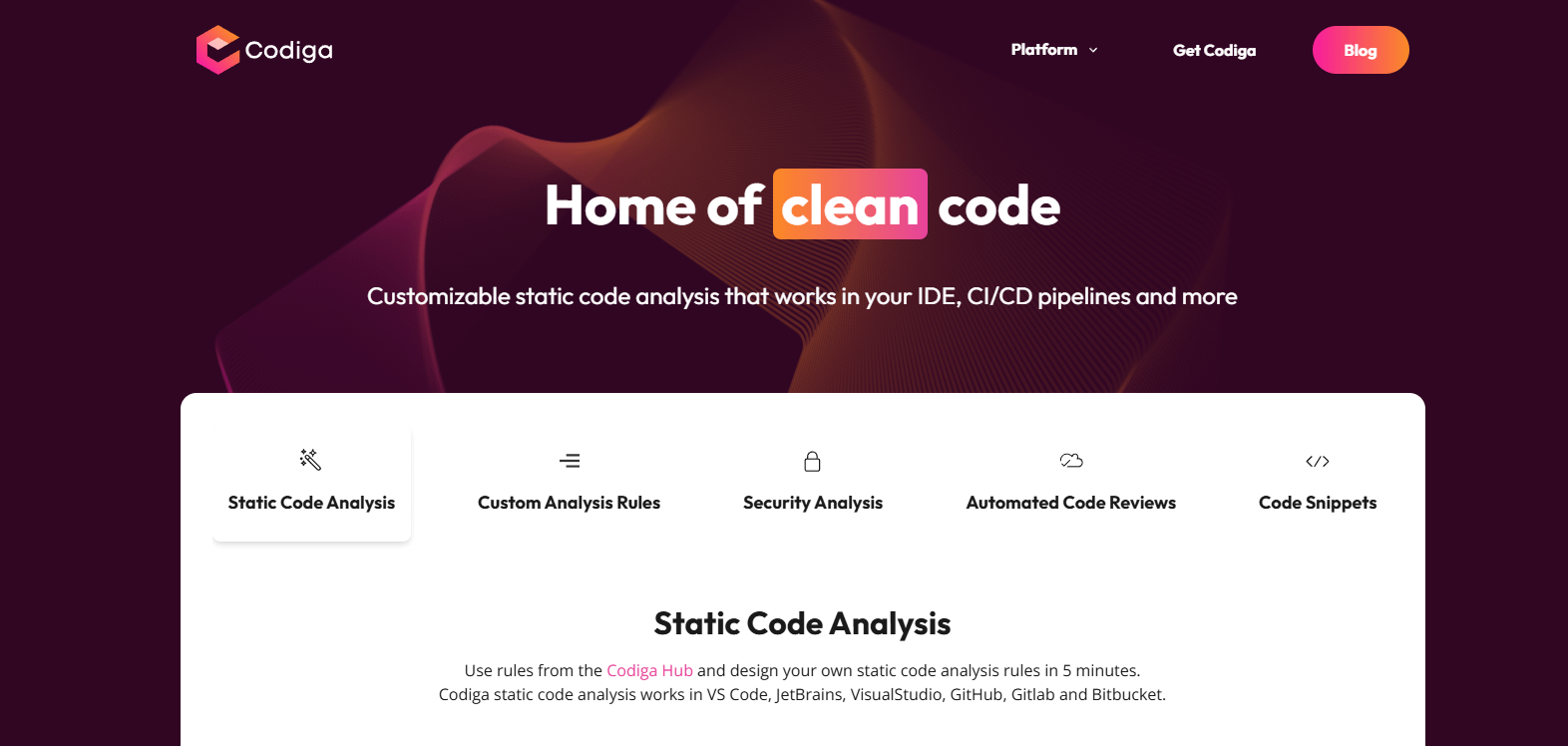AI codes refer to source code that is generated, completed, or optimized with the help of artificial intelligence tools. These tools use models trained on millions of public code examples to suggest or generate code based on what you type or ask in natural language.
AI is reshaping software development. Whether you’re learning to write code for the first time or working on complex enterprise systems, AI code tools can speed up the development process, reduce repetitive tasks, and improve productivity.
In this guide, you’ll learn what AI-generated code is, how AI code generation works, and where these tools fit into different stages of development.
We’ll cover the best AI code tools available today, show you how they support multiple programming languages, and explain where they shine—and where they fall short. You’ll also get step-by-step advice on how to start using AI tools to generate code, write entire functions, and simplify your coding tasks.
What Are AI Codes?
AI codes are source code outputs that are either fully generated or assisted by artificial intelligence. They can include everything from short code snippets to entire functions, documentation, test cases, and even code explanations.
Unlike human developers, AI doesn’t “think” or reason through a problem. Instead, it predicts likely outputs based on patterns found in massive datasets—usually billions of lines of public code pulled from repositories like GitHub. These predictions come from machine learning models, often called large language models, that have been trained specifically for code generation.
AI-generated code can be produced in many formats:
Auto-complete suggestions while writing
Code snippets to solve small problems
Entire functions based on input prompts
Bug fixes or recommendations
Comments and documentation to explain complex logic
Code translation between different programming languages
The most common languages used in AI code generation are Python, JavaScript, C++, C#, and Java, but many tools support multiple programming languages. This makes AI code tools accessible to developers across different tech stacks.
It’s also important to note that AI code tools don’t just write code from scratch. They can improve existing code, restructure outdated functions, and even document code for better collaboration. Whether you’re writing new scripts or working through the software development process, these tools aim to speed up coding tasks and reduce errors.
As AI continues to advance, AI code generators are becoming smarter, faster, and more integrated into everyday development workflows.
How Does AI Work in Code Generation and Development?
AI code generation tools rely on large language models (LLMs) such as OpenAI Codex, Code Llama, and StarCoder. These models are trained on massive datasets containing billions of lines of source code from public repositories like GitHub. With that training, they learn how to recognize patterns, structure, and logic across different programming languages.
When you type a prompt, the AI uses natural language processing to understand what you want. It then predicts and generates code that fits your request. Whether you ask for a simple code snippet or an entire function, it uses past patterns to write the most likely solution.
What Tasks Can AI Help With?
AI tools assist with many parts of the software development process:
Auto-completion: Finishes lines or blocks of code as you type
Bug detection: Flags coding errors or suggests fixes in real time
Function generation: Writes entire functions or components
Code translation: Converts code across multiple programming languages
Code documentation: Adds comments or markdown summaries
Refactoring: Cleans up and optimizes inefficient code
Testing: Helps generate unit tests and test cases
These features are especially helpful for reducing repetitive tasks and speeding up your coding process.
AI Isn’t Just for Writing New Code
Many AI tools can also work with existing code. They offer intelligent code suggestions, explain complex sections, and help with debugging or documentation. This kind of code assistance supports better code quality and a smoother development workflow.
By combining speed with flexibility, AI code tools support a wide range of development tasks—from prototyping and testing to maintaining large, complex codebases.
Use Cases for AI in Coding
AI code tools aren’t just for writing code faster—they can support every part of the development process. From helping beginners understand syntax to improving enterprise efficiency, AI has use cases for nearly every type of developer.
Beginner Learning Support
AI is especially helpful for those learning to code. You can ask for explanations, generate code snippets, and see how different concepts work.
Practice coding: Use an AI code generator to quickly generate code snippets you can modify and study
Code explanation: Ask the AI to explain what specific lines mean in plain English
Syntax learning: Get intelligent code suggestions as you type, helping you learn correct formatting and logic
These tools turn static learning into interactive coding experiences.
Rapid Prototyping
AI speeds up the early stages of development by helping you generate code for quick MVPs or test ideas.
Scaffold applications: Create the base structure of a program or webpage
Generate components: Quickly build frontend elements or backend logic
Accelerate workflows: Reduce setup time for experiments or client demos
This is especially helpful for startups or solo developers working under tight timelines.
Testing and Debugging
AI code tools also support the debugging process and help you write better tests.
Find bugs: Spot syntax issues or logic flaws with AI-powered suggestions
Generate unit tests: Automatically create test cases based on the function logic
Fixing code: Ask the tool to rewrite broken code or explain what’s wrong
These features reduce time spent on trial-and-error debugging.
Documentation Generation
Creating documentation can be tedious. AI tools can document code while you write it.
Commenting code: Convert code into human-readable summaries
API docs: Use natural language processing to write endpoint descriptions
Onboarding support: Help new devs understand codebases with clear AI-generated docs
This improves team communication and makes your projects easier to maintain.
Code Translation and Refactoring
Switching between programming languages or updating old code? AI can help.
Translate code: Convert Python code to Java or JavaScript to TypeScript
Optimize code: Clean up redundant logic or restructure poorly written sections
Refactor entire functions: Modernize legacy code with minimal effort
AI removes much of the manual work involved in code migration or cleanup.
Enterprise Efficiency
Larger teams benefit from automation and integrations that AI tools offer.
Automate repetitive tasks: Reduce time spent on boilerplate and standard code patterns
Boost developer productivity: Use intelligent code completion and real-time code suggestions to speed up work
Integrate with cloud and CI/CD: Many AI code tools connect with cloud platforms, version control, and build pipelines
For enterprises, this means faster delivery, fewer errors, and smoother workflows.
Top AI Code Tools (Free & Paid)
AI code tools come in many forms—some help you write better code in real time, while others focus on documentation, testing, or team collaboration. Here are 10 of the best options available today, covering both free and paid tools.
1. GitHub Copilot
GitHub Copilot is one of the most well-known AI code generators. Built on OpenAI Codex, it integrates directly into editors like Visual Studio Code and JetBrains to offer real-time code suggestions, complete functions, and generate code snippets as you type.
What it does: Provides intelligent code completion across various programming languages
Key features: Whole function generation, inline code suggestions, and natural language to code conversion
Supported languages: Python, JavaScript, TypeScript, Ruby, Go, and more
Best for: Developers who want deep IDE integration with strong autocomplete
Pricing: Offers a free plan; paid plans range from $4 to $21 per user per month
2. Amazon Q Developer
Amazon Q Developer is AWS’s AI coding assistant built to help you write, debug, and understand code faster. It’s integrated into IDEs and cloud environments, offering context-aware support across various development tasks.
What it does: Generates code, explains logic, and answers developer questions within your workflow
Key features: In-editor chat, AI-powered troubleshooting, real-time code suggestions
Supported languages: Python, JavaScript, Java, TypeScript, C#, Go
Best for: Cloud-based development and AWS-integrated projects
Pricing: Offers a free plan; the paid plan costs $19 per user per month
3. Tabnine
Tabnine is an AI code completion tool trained only on permissively licensed code. It emphasizes team collaboration and privacy, making it a strong fit for enterprises and regulated industries.
What it does: Offers smart code suggestions and team-trained models
Key features: Local AI inference, custom team models, and broad IDE support
Supported languages: Supports multiple programming languages including Python, JavaScript, Java, C++
Best for: Teams focused on compliance, performance, and control
Pricing: Offers a free trial; paid plans range from $9 to $39 per user per month
4. Replit Ghostwriter
Replit Ghostwriter is built into Replit’s browser-based IDE. It not only generates code but also explains it, making it ideal for both beginners and those working on quick prototypes.
What it does: Generates and explains code inside a cloud IDE
Key features: Code completion, debugging help, and real-time code suggestions
Supported languages: JavaScript, Python, C++, and more via Replit
Best for: Beginners or those working on collaborative or fast projects
Pricing: Offers a free plan; paid plans start from $20 per month
5. Cursor
Cursor is a new code editor built specifically around AI pair programming. It allows you to prompt the AI directly within your editor and iterate faster with code changes.
What it does: Acts as a collaborative AI inside a custom editor
Key features: Built-in AI chat, editable prompt history, and file-aware context
Supported languages: Python, TypeScript, JavaScript, and more
Best for: Developers who want tight AI integration in a minimal IDE
Pricing: Offers a free plan; paid plans range from $20 to $40 per user per month
6. Codiga
Codiga is a static code analysis platform that helps you write clean, secure code faster. It provides real-time feedback as you code and enforces coding standards through automated rules, making it ideal for improving code quality.
What it does: Analyzes code for best practices, security issues, and formatting errors
Key features: Static analysis, code snippets, security scanning, customizable coding rules
Supported languages: Python, JavaScript, TypeScript, Java, and more
Best for: Teams focused on clean, consistent, and secure codebases
Pricing: Offers a free plan; paid plans range from $10 to $18 per month
7. AskCodi
AskCodi is a web-based AI tool with multiple modules to generate code, assist with SQL queries, and document code. Its versatility makes it suitable for many different types of developers.
What it does: Offers a suite of AI-powered tools for coding tasks
Key features: Code generation, SQL assistant, and code documentation
Supported languages: JavaScript, Python, Java, C++, and more
Best for: Web developers, database engineers, and learners
Pricing: Doesn’t have a free plan; paid plans range from $14.99 to $34.99 per month
8. Sourcegraph Cody
Cody is Sourcegraph’s AI coding assistant designed for navigating and editing large codebases. It provides context-aware suggestions based on your entire project structure.
What it does: Gives smart suggestions for large-scale codebases
Key features: Full-project code understanding, in-depth search, and in-editor chat
Supported languages: Supports multiple languages, especially enterprise stacks
Best for: Large teams managing complex codebases
Pricing: Offers a free plan; paid plans range from $19 to $59 per user per month
9. Qodo
Qodo (formerly CodiumAI) is focused on test generation and code review. It integrates into GitHub and CI workflows to help developers ship higher-quality code.
What it does: Writes tests and checks for coding errors
Key features: Test suggestions, code review summaries, and TDD support
Supported languages: Python, JavaScript, and other common testable languages
Best for: Developers practicing test-driven development
Pricing: Offers a free plan; paid plans start from $19 per user per month
10. CodeGeeX
CodeGeeX is a multilingual AI code generator that supports over 20 programming languages. It offers both web and VS Code access for writing or translating code.
What it does: Generates and translates code across languages
Key features: Multilingual support, real-time suggestions, and model transparency
Supported languages: Python, C++, Java, PHP, Rust, and more
Best for: Developers working in different programming languages
Pricing: Offers a free plan; pricing not publicly available
Benefits of Using AI for Code Generation
AI code tools help developers move faster, write better code, and focus on what matters. From reducing repetitive tasks to helping beginners get started, these tools offer real value at every level.
Speeds Up Development Time
One of the most noticeable benefits of AI code generation is how much time it saves. Instead of building everything manually, you can:
Generate code snippets on demand
Auto-complete entire functions as you type
Translate natural language into working code
This leads to faster prototypes, quicker iterations, and shorter feedback loops—especially helpful in agile environments.
Supports Beginner Learning
AI code tools also double as learning companions. For new developers, they provide real-time support by explaining syntax, suggesting improvements, and generating examples. This turns coding into a more interactive experience, reducing frustration and boosting confidence.
You don’t need to leave your IDE to search forums or watch tutorials. You can ask questions, get a code explanation instantly, and keep learning while coding.
Reduces Repetitive Work
Some parts of coding are just tedious. Writing unit tests, documenting functions, or cleaning up code you’ve already written can drain time and energy.
AI tools can handle many of these tasks for you:
Generate unit tests from function logic
Refactor existing code with a single prompt
Document code using plain language summaries
This frees you up to work on the more strategic parts of development.
Increases Productivity and Focus
By taking care of small, repetitive decisions, AI helps you stay focused. You’re not jumping between tabs or constantly breaking your flow to fix syntax.
Instead, you stay in the zone—coding faster and more confidently, with AI acting like a second brain that’s always ready to assist.
Limitations and Challenges of AI Code Tools
While AI code tools offer impressive benefits, they’re not perfect. Relying on them without understanding their limits can create problems—especially when it comes to code quality, security, and long-term development habits.
AI-generated code may work, but that doesn’t mean it’s efficient or clean. Sometimes, it produces bloated or repetitive logic. Other times, it might use outdated methods or generate code that’s harder to maintain.
That’s why you still need to review everything. Just like copying from Stack Overflow without understanding, blindly using AI suggestions can lead to inefficient code or unexpected bugs.
Using AI for every task can stop you from thinking through problems on your own. This is especially risky for newer developers who may skip learning core concepts because the AI always has an answer.
It’s helpful to think of AI as a coding assistant—not a replacement. Use it to support your logic, not define it.
Security Vulnerabilities and Legal Concerns
There are also real concerns around security and licensing. Some AI tools have been known to generate code that includes potential vulnerabilities or insecure practices. Others may reuse patterns from training data, raising legal questions about originality.
Common risks include:
Security vulnerabilities introduced through generated code
Licensing conflicts from training on public repositories
Code quality issues in long or multi-file projects
Especially in enterprise environments, it’s important to audit AI-generated code and follow your organization’s review process.
Most AI code generators lack deep awareness of large or multi-file projects. They can miss dependencies, overlook project-wide patterns, or misunderstand your codebase if it’s too complex.
As a result, suggestions may seem helpful on the surface but break functionality when used in context.
How to Start Using AI Code Tools Effectively
Getting started with AI code generation doesn’t have to be complicated. Whether you’re a beginner or an experienced developer, the key is to start small and use AI as a coding companion—not a crutch.
Pick the Right Tool for Your Workflow
Some tools work best inside specific editors like Visual Studio Code, while others offer full cloud-based environments. If you’re new, try tools like GitHub Copilot or CodeGeeX inside an IDE you already use. For more cloud-focused workflows, CodeWhisperer or Replit Ghostwriter might be better fits.
Match your needs to the tool’s strengths. For example, if you’re focused on refactoring existing code or writing unit tests, tools like Mutable AI or CodiumAI will serve you better than general-purpose generators.
Use Prompts to Guide the AI
Think of your prompt as a conversation. The clearer your request, the better the output. Start by asking for simple functions or small code snippets. Then, work your way up to more complex requests like generating entire components or documenting large blocks of code.
Here are a few tips to keep in mind:
Be specific: “Generate a Python function that sorts a list of numbers” works better than “sort something”
Build context: Mention variables, inputs, or desired output format
Iterate: If the first result isn’t perfect, refine your prompt or ask follow-up questions
Don’t Skip the Review Step
Even if the tool generates code that runs, you still need to check it. Look for logic issues, inefficiencies, and potential security vulnerabilities. Think of AI code as a draft—not a final product.
Finally, explore integrations. Many AI tools connect with version control platforms, CI/CD pipelines, and cloud environments. These features can help you automate even more of your workflow once you’re comfortable using the tools.
FAQs About AI Codes
What are AI codes?
AI codes refer to code generated by artificial intelligence tools, either from scratch or by completing code you’ve already started. These tools rely on trained AI models that recognize coding patterns and produce output that fits your input.
The result can be anything from a single line to a full function, with suggestions that often reflect common coding best practices.
What is AI in coding?
AI in coding refers to the use of machine learning and large language models to assist with various coding tasks. This includes things like auto-completing lines of code, generating documentation, fixing bugs, and translating between languages.
With AI-powered code completion tools, developers get suggestions that align with proper code structure, reducing time spent on repetitive tasks and improving overall workflow.
Is there a free coding AI?
Yes, there are several tools available at no cost. AWS CodeWhisperer offers a free individual plan, and CodeGeeX is completely free to use via the web or as a browser extension.
These tools use natural language descriptions to generate functional code and support multiple languages. Some even help debug code or analyze code quality in real time, which makes them especially useful for beginners.
How do I start coding AI?
You can start by using AI coding assistants in your favorite IDE, like GitHub Copilot in Visual Studio Code. If you’re more interested in building your own models, start learning Python, study AI capabilities, and explore machine learning libraries like TensorFlow or PyTorch.
These tools are designed to enable developers to experiment with AI workflows, write high-quality code snippets, and solve a wide range of problems across various coding tasks.
